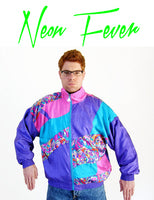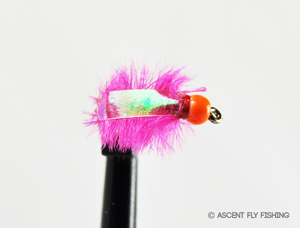
Why and When to Use Fluorescent and Hi-Visibility Fly Patterns
The year was 1991. The Fresh Price of Bel-Air is on TV and Good Vibrations by Marky Mark & The Funky Bunch is blasting on the boom box as you get ready for a night out on the town. This is not an evening for half measures, so the fanny pack stays at home and you break out your favorite outfit: a fluorescent orange Ocean Pacific t-shirt, with a teal and hot pink patterned wind breaker over the top. You give your hair a healthy dose of gel before artfully arranging your bangs from under the backwards-turned, neon green hat. This outfit puts off more light than the entirety of North Korea on a clear night, and you are confident that you are going to get some attention from the ladies!
Fast forward 24 years to the present. Your favorite wind breaker has long since gone to Goodwill, and your once-abundant hair has largely migrated to your back and ears. At the moment, you are less interested in attracting the attention of the opposite sex than you are the massive rainbow trout feeding on invertebrates unknown in the pool you stand next to on the river. It's at times like this that we need to take a chapter from the 90's and break out the neon again!
In the past, we've looked at a trout's ability to perceive red, green, and blue spectrums of color. But today, we are going to wade a little deeper into trout vision. Color is perceived when a pigment within an object reflects light of a similar wavelength (i.e. the red pigment in an apple reflects red wavelengths) while all other wavelengths are absorbed in the object. When the reflected light is received through the eye of the viewer (human or trout), the specific color of the wavelength of light is interpreted by the brain. This process of absorption, reflection, and interpretation of color is true for the whole rainbow of colors: red through violet. Each color is visible to trout at a different depth and distance through the water column, with red fading out the quickest and blue being visible at the greatest distance.
Fluorescent colors occur when ultra-violet (UV) light, which is not visible to humans, is absorbed by an object and is re-emitted in a spectrum that we can see. The resulting color has a brilliant intensity, greater visibility, and is more distinct from its environment. On overcast days or in water clouded by algae or runoff, patterns with fluorescent materials continue to shine due to the ability of UV light to pierce both cloud and haze to light up your fly. So the next time you're on the water and the bite is slow, tie on a pattern with a little neon flair, turn your hat backwards, and get ready for some Hammer Time!





